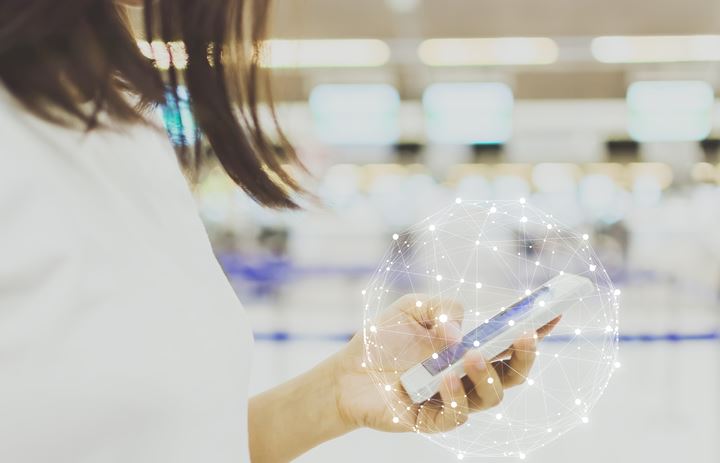
This blog post originally appeared on the Allied Universal Fire Life Safety Training System blog.
The first cellphone was developed in 1973 by Motorola Researcher, Martin Cooper. Heavy and clunky, that first device was a far cry from the sleek, versatile mobile phones of today. Since Cooper’s invention, companies have competed to produce more portable technology and offer better connectivity. And they have largely succeeded. In fact, as a result, worldwide today, 2.53 billion people own smartphones. According to a Pew Research study, 95 percent of Americans own a cellphone of some kind, with 77 percent of the devices qualifying as "smart." With smartphone use at an all-time high, it’s time to examine the myriad ways the device can aid disaster preparation, survival and recovery.
Smartphones in Disaster Preparation
- Outfit your smartphone for disaster. Before an emergency hits, prepare your phone by investing in a waterproof case, backup batteries, a portable charger, a signal booster and a backup cellphone that uses AA or long-lasting batteries. Try not to let your smartphone battery dip below half a charge. Several firms are developing solar and hand-crank cellphone chargers, which could come in handy. Research options before you need them.
- Store useful information. In the likely event a disaster affects cell service, you may not have access to the internet during an emergency. That’s why it’s important to make sure your contact information is up to date. Check emergency numbers. Save contact information for your local police and fire departments, as well as utility companies. This could come in handy if you need to report service or power outages following an emergency.
- Create a private group-list of emergency contacts. Assuming phone service is available and your smartphone is sufficiently charged, you should be able to create a single text message to a group to let them know your status following a disaster.
- Consider downloading Twitter, even if you do not have an account. Assuming cell towers are providing power to your region following an emergency, downloading the Twitter app will enable you to stay up to date, as the social network is an important vehicle for sharing information before, during and after a disaster. You do not need to set up a profile to receive Twitter updates.
- Bookmark useful mobile sites and download relevant apps. While internet access is available, take advantage of mobile websites such as the National Oceanic & Atmospheric Administration (NOAA), Centers for Disease Control & Prevention (CDC), and Department of Homeland Security/ FEMA. Bookmarking the sites and downloading associated apps will give you access to data that was on your screen the last time you had internet access. So, in the event of an emergency that disables Wi-Fi and data service, you will be able to review cached (stored) information if your cellphone has power. Also, make sure you have downloaded apps that provide wireless emergency alerts. Great examples include American Red Cross, Emergency Alerts, FEMA, and Disaster Alert.
- Load Your Health Care App, ICE. In an emergency, you may need medical assistance. So, long before you have need of it, load medications’ list, blood type and allergies onto your smartphone for first responders to access. The ICE app is available on iTunes as well as Google Play.
How Smartphones Can Help You During a Disaster
If you follow the handy hints above, you should have access to your cellphone’s cached pages once a disaster occurs. Remember, the rule of thumb during emergencies is to rely on mobile phones only for emergencies. In other words, call family and friends to check in. But leave channels open for first responders. This is also important since it could take time for power to be restored.
We hope you have assembled a Go Bag. But if you didn’t put together an emergency kit prior to the disaster, you can use several of your phone’s tools in place of common supplies:
- Flashlight
- Compass (GPS) to help locate family members
- Radio (if your phone is charged and cell service is available)
- Images of important documents
- Contact lists of family and close friends, who may need to be notified
- Maps of the area can be cached on your phone
- Screenshots of survival guide, tips and first aid instructions for access, even if data and Wi-Fi are down.
Use Your Smartphone for Disaster Recovery
Incorporating the latest technology into your disaster preparedness plans will help mobilize recovery efforts. The most obvious benefit of mobile devices is in providing the ability to communicate from most locations around the country and around the world. As mentioned in a recent blog on Scientific American, even when a clear phone signal is not available, texting could be a viable option for communicating with family and friends or emergency personnel.
About Our Training System
Another way to make sure you are ready to handle disasters of any kind is through the Allied Universal Fire Life Safety Services Training System. Our interactive, building-specific e-learning program helps commercial, residential, educational, institutional, government, retail and industrial buildings with compliance to fire life safety codes and rewards building occupants instantly! It’s a convenient and affordable solution to the training needs of your facility.
 About the Author
About the Author
Kimber Westmore is the director of Allied Universal’s Fire Life Safety Training Division.























